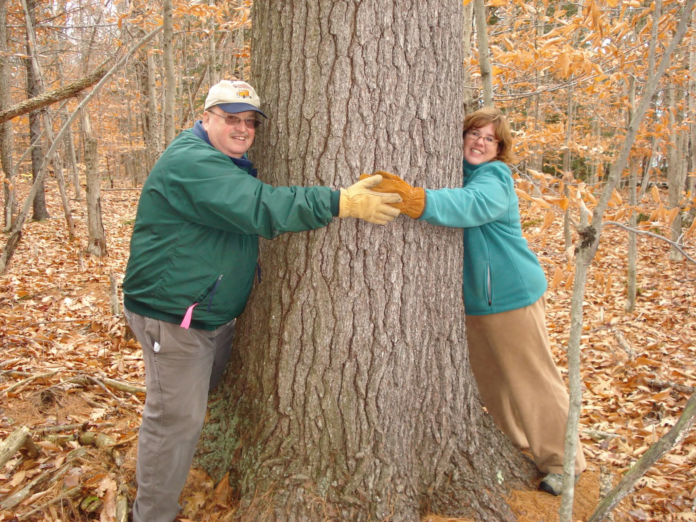Bob Chadbourne, who died Sept. 17 at age 84, continued a family tradition of logging that stretched back 11 generations, helping shape the woods and economy of western Maine.
The Chadbourne family’s roots in the lumber business trace to 1634, when William Chadbourne arrived from Devonshire, England, on a King’s grant to harvest masts for the Royal Navy. He built what is believed to be the first sawmill in America in South Berwick.
In the 1930s, Bob’s father, Philip Henry Chadbourne, established a logging operation in Bethel. Harvesting eastern white pine from family timberlands, Philip built the P.H. Chadbourne Sawmill and amassed 65,000 acres of forest.
After his father’s death in 1986, Bob bought out his siblings and took over the sawmill and timberland management. He emphasized sustainable forestry practices — selective harvesting over clear-cutting, pruning for quality, promoting biodiversity and avoiding monocultures.
In 2014, Chadbourne Tree Farms received the Austin H. Wilkins Forest Stewardship Award in recognition of that stewardship.
Bob sold the family’s white pine sawmill on Route 26 to Hancock Lumber in 2000, but kept the timberlands, which retained the Chadbourne Tree Farm name.
In 2021, the family sold 15,408 acres of the tree farm to the nonprofit Conservation Fund.
“It worked out very nicely that the Conservation Fund was interested because it did allow for continued forestry stewardship and public access,” said Bob’s son-in-law, David Stearns.
“It was very important to my dad that all the locals would still have access for hunting, fishing and snowmobiling,” said Nancy Stearns, Bob’s daughter. She said her father also insisted that the new owners continue paying property taxes to support local communities.
“He wasn’t afraid to make a stand,” David Stearns said.
“He was a strong believer in landowner rights,” Nancy Stearns said. “I know at one time for a short period he did shut down his land for political reasons.”
Northern Woodlands magazine writer Richard Adams Carey called the Chadbourne operation “one of the prime economic engines for that part of the state.” He described the tree farm as “not a typical operation,” but a fragmented property of 45 parcels “like dabs of paint flung from the sweep of Jackson Pollock’s brush,” scattered along the Androscoggin River and into Albany and Waterford.
In a family statement, the Chadbournes wrote, “The exceptional timber resources reflect the decades of long-term stewardship administered by generations of the Chadbourne family with the help of many skilled and hard-working employees and associates.”
Nancy Stearns said, “My dad was always very big on sharing the spotlight with the generations of employees and associates and the contractors working with us.”
“As a family we have always made it clear that none of this could happen without hardworking people in the operation,” David Stearns added. “The employees got us here.”
Bob Chadbourne’s wife, Nancy, and daughter Nancy Stearns and her family continue the family legacy, now managing 4,000 acres in the Bethel area.




